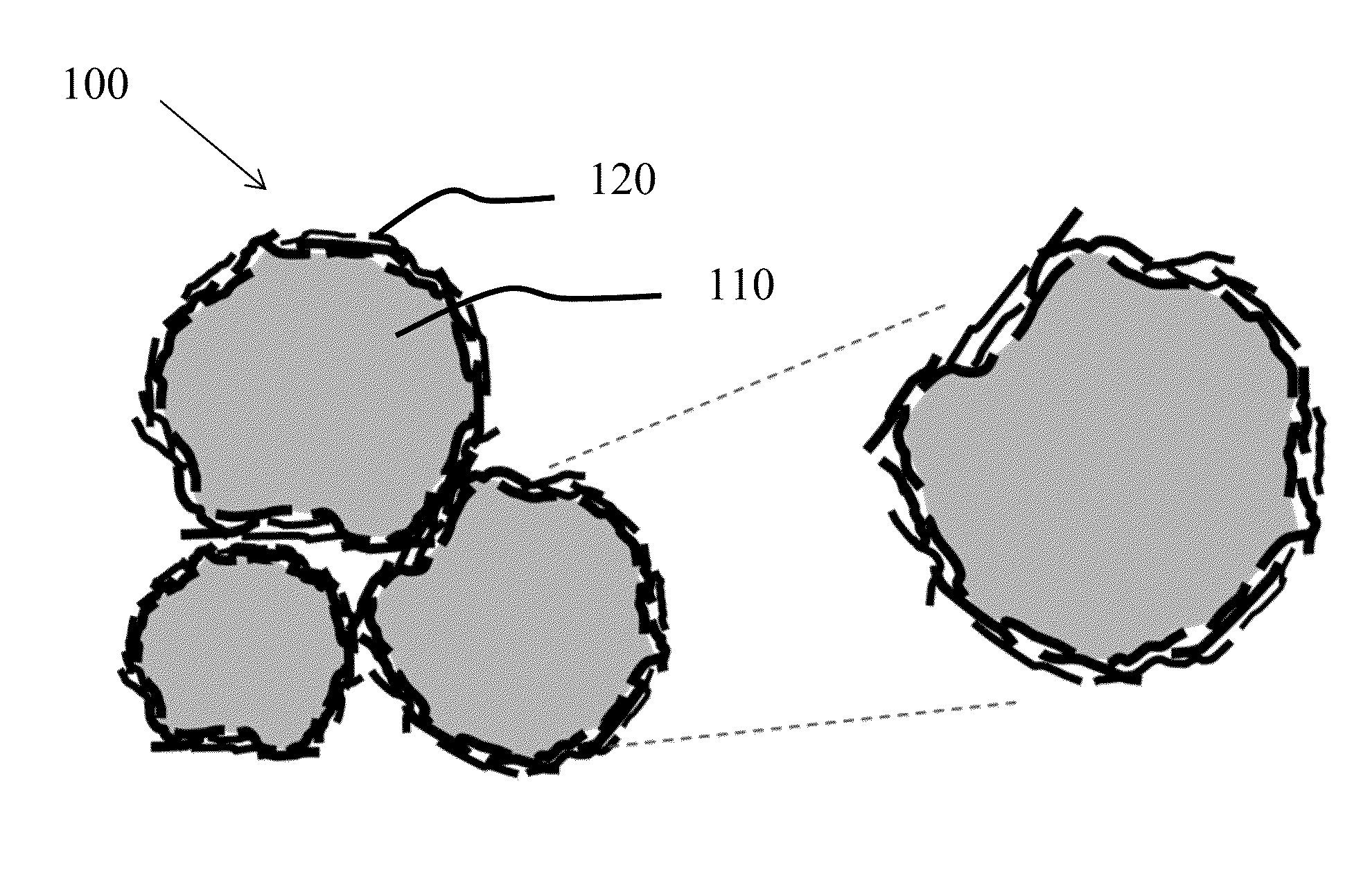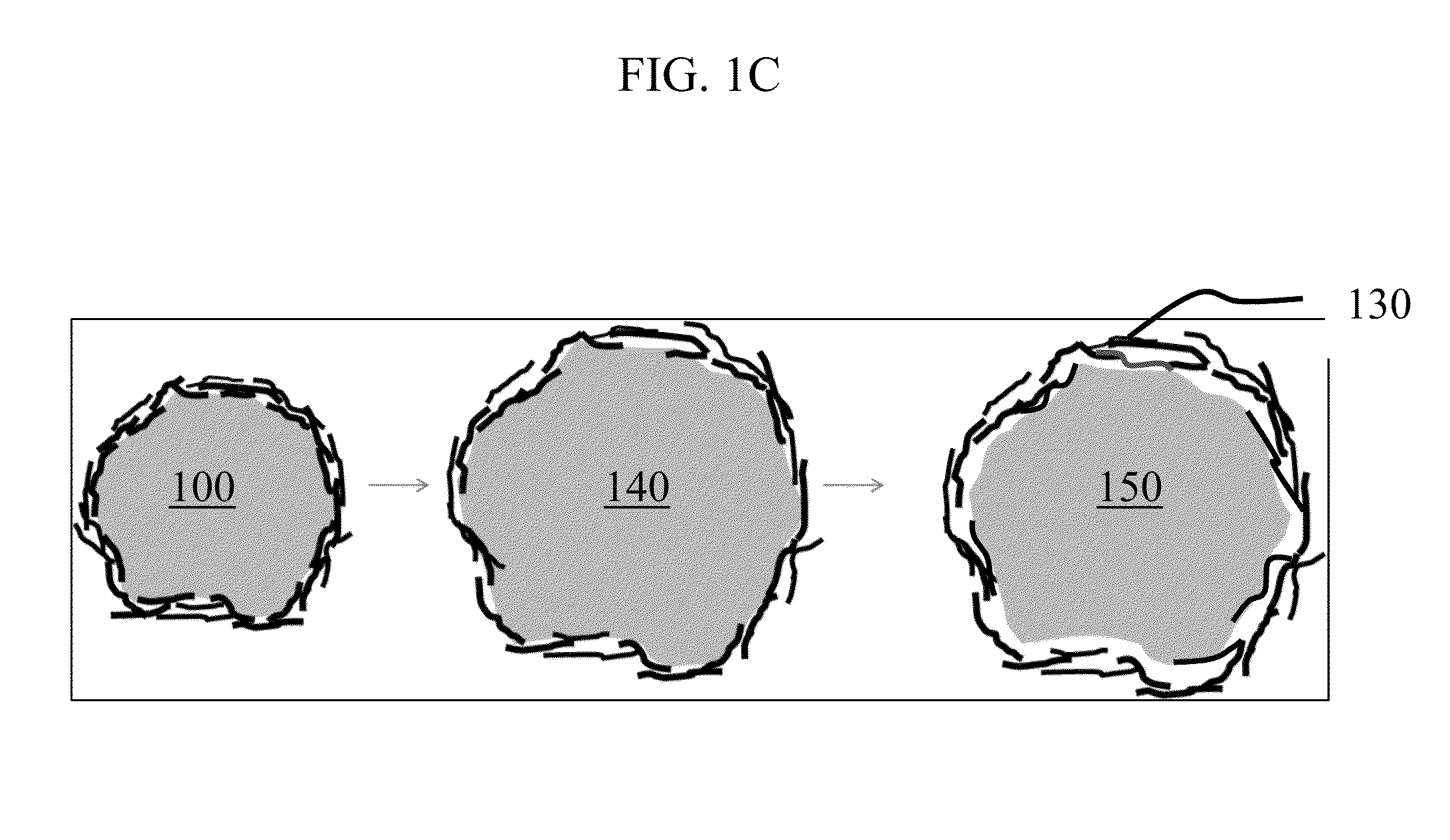Silicon-graphene nanocomposites for electrochemical applications
a technology of graphene nanocomposites and electrochemical applications, which is applied in the direction of carbon-silicon compound conductors, cell components, coatings, etc., can solve the problems of not meeting unable to meet the target of graphite anode materials, and unable to meet the target of current lib chemistries, etc., to achieve the effect of optimizing the performance of lithium ion batteries
- Summary
- Abstract
- Description
- Claims
- Application Information
AI Technical Summary
Benefits of technology
Problems solved by technology
Method used
Image
Examples
Embodiment Construction
[0078]A nanographitic composite for use as a battery material in a lithium ion battery is described. The composite material includes nanoscale and microscale particles of an electroactive material, such as silicon, that are directly coated with nanographitic platelets or graphene nanoplatelets. By directly coated it is meant that the graphene forms a direct contact with the electroactive particle. The contact is sufficiently direct to allow the formation of a strong, robust interaction between the graphene nanoplatelets and the electroactive materials. Similarly, there is no intermediary material disposed between the graphene and the electroactive particle.
[0079]The graphene nanoplatelets are of a relatively small dimension, that is, the graphene nanoplatelets are nanoscale and are not of the lengths typically associated with graphitic platelets or flakes (which are greater than 1 μm and typically greater than 10 μm). The electroactive particle has an average particle size that is l...
PUM
| Property | Measurement | Unit |
|---|---|---|
| Length | aaaaa | aaaaa |
| Fraction | aaaaa | aaaaa |
| Fraction | aaaaa | aaaaa |
Abstract
Description
Claims
Application Information
 Login to View More
Login to View More - R&D
- Intellectual Property
- Life Sciences
- Materials
- Tech Scout
- Unparalleled Data Quality
- Higher Quality Content
- 60% Fewer Hallucinations
Browse by: Latest US Patents, China's latest patents, Technical Efficacy Thesaurus, Application Domain, Technology Topic, Popular Technical Reports.
© 2025 PatSnap. All rights reserved.Legal|Privacy policy|Modern Slavery Act Transparency Statement|Sitemap|About US| Contact US: help@patsnap.com



